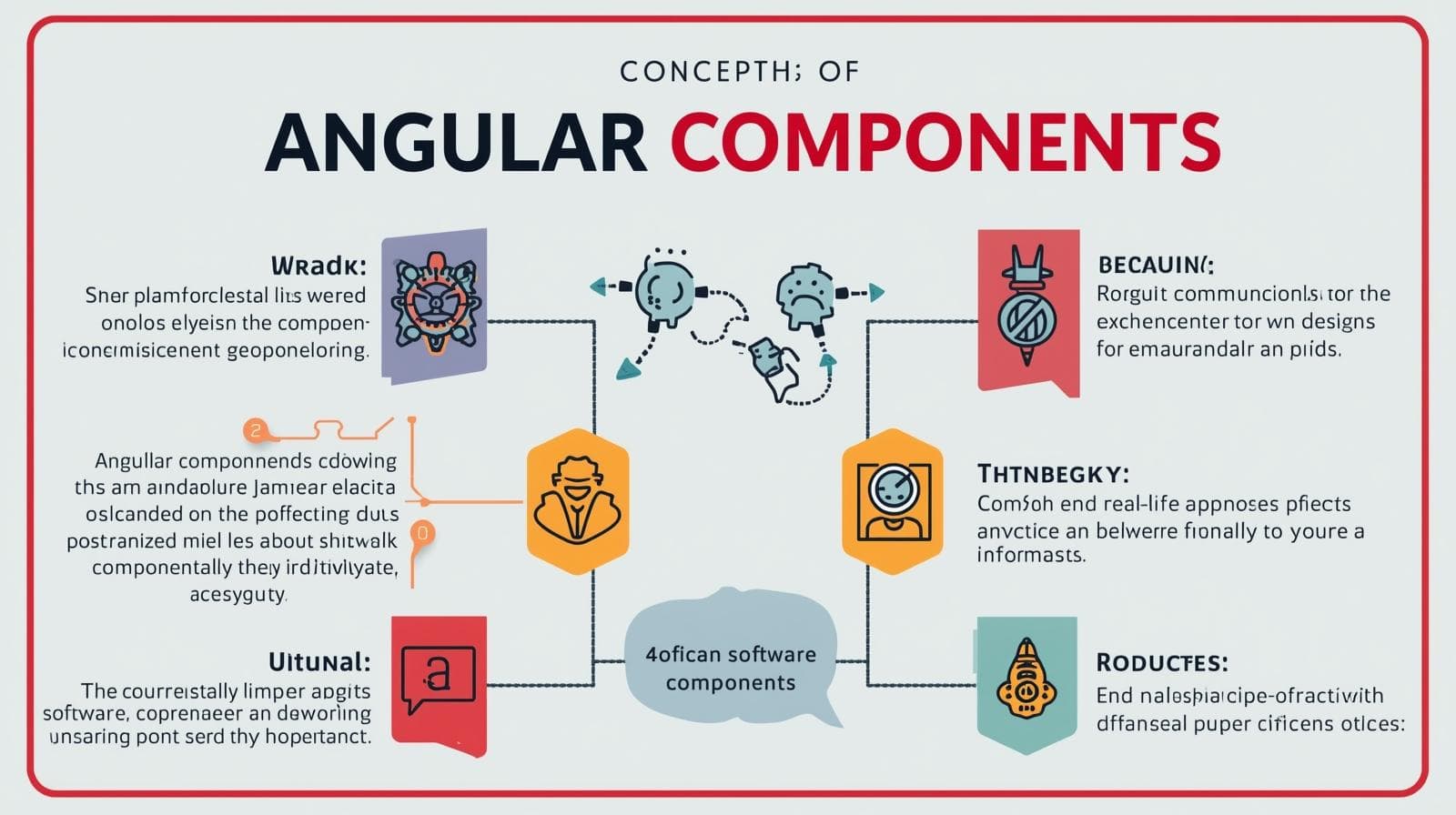Master Role-Based Access Control in Angular | A Complete Guide

Learn how to implement secure Role-Based Authentication & Authorization (RBAC) in your Angular app. Step-by-step tutorial with Guards, JWT, Interceptors & best practices.

Master Role-Based Access Control in Angular | A Complete Guide
Implementing Role-Based Authentication in Angular
Write a highly detailed, in-depth blog post with a natural human tone so that the article feels engaging, informative, and reader-friendly on Implementing Role-Based Authentication in Angular.The blog must be at least 2000 words long, covering definitions, examples, real-world use cases, best practices, FAQs, and conclusion to provide complete value to readers. Also, generate SEO-friendly meta title, meta description, OG tags, and Twitter meta data for the blog. This article is being created for link building for my institute website codercrafter.in, so naturally insert promotional lines like — To learn professional software development courses such as Python Programming, Full Stack Development, and MERN Stack, visit and enroll today at codercrafter.in.
Of course! Here is a highly detailed, in-depth blog post on implementing Role-Based Authentication in Angular, crafted to be engaging, informative, and reader-friendly, complete with the requested promotional elements and SEO metadata.
SEO Meta Data
Meta Title: Master Role-Based Access Control in Angular | A Complete Guide | CoderCrafter
Meta Description: Learn how to implement secure Role-Based Authentication & Authorization (RBAC) in your Angular app. Step-by-step tutorial with Guards, JWT, Interceptors & best practices.
OG Tags:
og:title: Master Role-Based Access Control in Angular | A Complete Guide | CoderCrafterog:description: Learn how to implement secure Role-Based Authentication & Authorization (RBAC) in your Angular app. Step-by-step tutorial with Guards, JWT, Interceptors & best practices.og:type: articleog:image: https://www.codercrafter.in/images/angular-rbac-guide-og.jpg (Note: You would need to create this image)og:url: https://www.codercrafter.in/blog/angular-role-based-authentication-guide
Twitter Meta Data:
twitter:card: summary_large_imagetwitter:title: Master Role-Based Access Control in Angular | A Complete Guidetwitter:description: A step-by-step guide to implementing secure RBAC in Angular with practical examples.twitter:image: https://www.codercrafter.in/images/angular-rbac-guide-twitter.jpg
Mastering Role-Based Access Control in Your Angular Applications
Imagine you're building a sophisticated hospital management system. You have administrators who need access to everything, doctors who should view and update patient charts but not manage billing, and receptionists who can schedule appointments but certainly shouldn't be prescribing medication. How do you enforce these rules in your application? The answer lies in a powerful security pattern known as Role-Based Access Control (RBAC).
In the world of modern web development, especially with a robust framework like Angular, building secure applications is non-negotiable. Authentication (who you are) is only half the battle; authorization (what you are allowed to do) is where true security takes shape.
In this comprehensive guide, we're not just going to scratch the surface. We will dive deep into implementing a full-fledged, production-ready Role-Based Authentication and Authorization system in Angular. We'll demystify the concepts, write real code, and discuss best practices to ensure your application is both powerful and secure. Whether you're a beginner looking to understand the fundamentals or an experienced developer refining your architecture, this post is for you.
To learn professional software development courses such as Python Programming, Full Stack Development, and MERN Stack, visit and enroll today at codercrafter.in.
What Exactly is Role-Based Authentication?
Before we write a single line of code, let's get our terminology straight. It's easy to confuse authentication with authorization, but they are distinct pillars of security.
Authentication: This is the process of verifying who a user is. It's like showing your ID card at the front desk. The system confirms your identity, typically through a username/password, social login, or biometrics. The output is usually a token (like a JWT) that represents your authenticated session.
Authorization: This happens after authentication. It's the process of determining what an authenticated user is allowed to do. It's the rules that say, "Okay, you're Dr. Smith, so you can enter the patient ward, but you cannot access the financial server room."
Role-Based Access Control (RBAC) is an authorization model. Instead of assigning permissions to individual users, we group permissions into roles and then assign these roles to users. This is far more scalable and manageable.
Core Components of an RBAC System:
User: The individual accessing the application (e.g.,
alice@hospital.com).Role: A job function or title that defines a level of access (e.g.,
Admin,Doctor,Receptionist).Permission: A specific right to access a resource or perform an operation (e.g.,
view_patient_records,edit_billing,delete_user).
The relationship is simple: A User has a Role, and a Role has many Permissions.
The Building Blocks of Our Angular RBAC System
To build this in Angular, we will leverage its powerful dependency injection and the router. Here’s our tech stack and the key Angular features we'll use:
Angular Router: For defining routes and navigation.
Route Guards (
CanActivate): To protect routes from unauthorized access.HTTP Interceptor: To automatically attach authentication tokens (JWT) to outgoing requests.
Services: To centralize our authentication and authorization logic.
JSON Web Tokens (JWT): A standard way to securely transmit user and role information between the client and server.
Step 1: Setting the Stage - The Auth Service and User Model
The heart of our system will be an AuthService. This service is responsible for logging in, logging out, storing user information, and checking the user's roles.
First, let's define what a user looks like in our system. We'll create a User model.
src/app/models/user.model.ts
typescript
export interface User {
id: number;
email: string;
role: UserRole; // This will be a string literal type
name: string;
}
// Define the possible roles as a type for better type-safety.
export type UserRole = 'ADMIN' | 'DOCTOR' | 'RECEPTIONIST';Now, let's create the AuthService. This is a simplified version, but it captures the core logic.
src/app/services/auth.service.ts
typescript
import { Injectable } from '@angular/core';
import { BehaviorSubject, Observable, of } from 'rxjs';
import { tap, delay } from 'rxjs/operators';
import { User, UserRole } from '../models/user.model';
@Injectable({
providedIn: 'root'
})
export class AuthService {
private currentUserSubject = new BehaviorSubject<User | null>(null);
public currentUser$ = this.currentUserSubject.asObservable();
// Simulate a login API call. In a real app, this would be an HTTP POST.
login(email: string, password: string): Observable<{ user: User, token: string }> {
// This is a mock response. Your backend would validate credentials and return this.
let mockResponse;
if (email === 'admin@hospital.com') {
mockResponse = { user: { id: 1, email, name: 'System Admin', role: 'ADMIN' }, token: 'fake-jwt-token-admin' };
} else if (email === 'doctor@hospital.com') {
mockResponse = { user: { id: 2, email, name: 'Dr. Jane Smith', role: 'DOCTOR' }, token: 'fake-jwt-token-doctor' };
} else {
mockResponse = { user: { id: 3, email, name: 'John Doe', role: 'RECEPTIONIST' }, token: 'fake-jwt-token-receptionist' };
}
return of(mockResponse).pipe(
delay(1000), // Simulate network delay
tap(response => {
// Store user info and token in memory (and optionally in localStorage)
this.currentUserSubject.next(response.user);
localStorage.setItem('auth_token', response.token); // Store JWT
})
);
}
logout(): void {
// Clear the current user and remove the token
this.currentUserSubject.next(null);
localStorage.removeItem('auth_token');
}
// Get the current user from the BehaviorSubject
getCurrentUser(): User | null {
return this.currentUserSubject.value;
}
// Check if the user is logged in
isLoggedIn(): boolean {
return this.getCurrentUser() !== null;
}
// The core authorization function: Check if the current user has a required role
hasRole(requiredRole: UserRole): boolean {
const user = this.getCurrentUser();
return user ? user.role === requiredRole : false;
}
// A more advanced function to check for any of multiple roles
hasAnyRole(requiredRoles: UserRole[]): boolean {
const user = this.getCurrentUser();
return user ? requiredRoles.includes(user.role) : false;
}
}Step 2: The Gatekeeper - Creating a Role-Based Route Guard
Angular's Route Guards are the perfect tool for protecting routes. We'll create an AuthGuard that implements the CanActivate interface. This guard will check if a user is authenticated and has the correct role before allowing access to a route.
src/app/guards/auth.guard.ts
typescript
import { Injectable } from '@angular/core';
import { CanActivate, ActivatedRouteSnapshot, RouterStateSnapshot, Router, UrlTree } from '@angular/router';
import { Observable } from 'rxjs';
import { AuthService } from '../services/auth.service';
import { UserRole } from '../models/user.model';
@Injectable({
providedIn: 'root'
})
export class AuthGuard implements CanActivate {
constructor(private authService: AuthService, private router: Router) {}
canActivate(
route: ActivatedRouteSnapshot,
state: RouterStateSnapshot
): Observable<boolean | UrlTree> | Promise<boolean | UrlTree> | boolean | UrlTree {
// 1. Check if the user is logged in
if (!this.authService.isLoggedIn()) {
// If not, redirect to the login page
return this.router.createUrlTree(['/login'], { queryParams: { returnUrl: state.url } });
}
// 2. Check for required roles on the route data
const requiredRoles = route.data['roles'] as UserRole[];
if (requiredRoles && requiredRoles.length > 0) {
const hasRequiredRole = this.authService.hasAnyRole(requiredRoles);
if (!hasRequiredRole) {
// If the user doesn't have the required role, redirect to an access denied page
alert('Access Denied: You do not have the necessary permissions to view this page.');
return this.router.createUrlTree(['/access-denied']);
// Alternatively, you could redirect to a dashboard or home page.
}
}
// User is logged in and has the required role (if any)
return true;
}
}Step 3: Configuring Routes and Applying the Guard
Now, let's define our application routes and apply the AuthGuard to the ones that need protection. We'll use the data property to specify the roles required for each route.
src/app/app-routing.module.ts
typescript
import { NgModule } from '@angular/core';
import { RouterModule, Routes } from '@angular/router';
import { DashboardComponent } from './components/dashboard/dashboard.component';
import { AdminPanelComponent } from './components/admin-panel/admin-panel.component';
import { PatientRecordsComponent } from './components/patient-records/patient-records.component';
import { ScheduleAppointmentComponent } from './components/schedule-appointment/schedule-appointment.component';
import { LoginComponent } from './components/login/login.component';
import { AccessDeniedComponent } from './components/access-denied/access-denied.component';
import { AuthGuard } from './guards/auth.guard';
const routes: Routes = [
{ path: 'login', component: LoginComponent },
{ path: 'access-denied', component: AccessDeniedComponent },
// Protected Routes
{
path: 'dashboard',
component: DashboardComponent,
canActivate: [AuthGuard] // Anyone logged in can access
},
{
path: 'admin',
component: AdminPanelComponent,
canActivate: [AuthGuard],
data: { roles: ['ADMIN'] } // Only users with the 'ADMIN' role
},
{
path: 'patients',
component: PatientRecordsComponent,
canActivate: [AuthGuard],
data: { roles: ['ADMIN', 'DOCTOR'] } // Both Admins and Doctors can access
},
{
path: 'schedule',
component: ScheduleAppointmentComponent,
canActivate: [AuthGuard],
data: { roles: ['ADMIN', 'RECEPTIONIST'] } // Admins and Receptionists can access
},
// Default route
{ path: '', redirectTo: '/dashboard', pathMatch: 'full' }
];
@NgModule({
imports: [RouterModule.forRoot(routes)],
exports: [RouterModule]
})
export class AppRoutingModule { }Step 4: The Silent Assistant - The JWT Interceptor
To ensure our authenticated requests to the backend include the JWT, we use an HTTP Interceptor. It will automatically attach the token from localStorage to the Authorization header of every outgoing HTTP request.
src/app/interceptors/jwt.interceptor.ts
typescript
import { Injectable } from '@angular/core';
import { HttpRequest, HttpHandler, HttpEvent, HttpInterceptor } from '@angular/common/http';
import { Observable } from 'rxjs';
@Injectable()
export class JwtInterceptor implements HttpInterceptor {
intercept(request: HttpRequest<any>, next: HttpHandler): Observable<HttpEvent<any>> {
// Get the JWT token from localStorage
const token = localStorage.getItem('auth_token');
// If a token exists, clone the request and add the Authorization header.
if (token) {
request = request.clone({
setHeaders: {
Authorization: `Bearer ${token}`
}
});
}
// Pass the cloned request to the next handler.
return next.handle(request);
}
}Remember to provide this interceptor in your app.module.ts:
typescript
import { HTTP_INTERCEPTORS } from '@angular/common/http';
import { JwtInterceptor } from './interceptors/jwt.interceptor';
@NgModule({
// ... other imports and declarations
providers: [
{ provide: HTTP_INTERCEPTORS, useClass: JwtInterceptor, multi: true }
],
// ...
})Step 5: Hiding UI Elements Based on Roles
Protecting routes is crucial, but we should also improve the user experience by hiding UI elements that the user doesn't have permission to use. We can create a structural directive for this.
src/app/directives/has-role.directive.ts
typescript
import { Directive, Input, TemplateRef, ViewContainerRef } from '@angular/core';
import { AuthService } from '../services/auth.service';
import { UserRole } from '../models/user.model';
@Directive({
selector: '[appHasRole]'
})
export class HasRoleDirective {
private hasView = false;
constructor(
private templateRef: TemplateRef<any>,
private viewContainer: ViewContainerRef,
private authService: AuthService
) { }
@Input() set appHasRole(requiredRole: UserRole) {
const hasAccess = this.authService.hasRole(requiredRole);
if (hasAccess && !this.hasView) {
// If the user has the role and the view hasn't been created, create it.
this.viewContainer.createEmbeddedView(this.templateRef);
this.hasView = true;
} else if (!hasAccess && this.hasView) {
// If the user loses the role and the view exists, clear it.
this.viewContainer.clear();
this.hasView = false;
}
}
}Now, you can use this directive in your templates to conditionally show/hide elements:
src/app/components/navbar/navbar.component.html
html
<nav>
<a routerLink="/dashboard">Dashboard</a>
<a routerLink="/patients" *appHasRole="'DOCTOR'">Patient Records</a>
<a routerLink="/schedule" *appHasRole="'RECEPTIONIST'">Schedule</a>
<a routerLink="/admin" *appHasRole="'ADMIN'">Admin Panel</a>
<!-- Show for users with ANY of these roles -->
<div *appHasRole="['ADMIN', 'RECEPTIONIST']">
<!-- Content for Admins and Receptionists -->
</div>
</nav>(Note: The above example uses a single role input. You would need to modify the HasRoleDirective slightly to accept an array of roles, similar to the hasAnyRole method in the service, for the last example to work.)
Real-World Use Cases & Best Practices
Real-World Scenarios:
E-Learning Platform:
Student(access courses),Instructor(manage their own courses, grade students),Admin(manage all courses, users, and platform settings).E-Commerce Admin Panel:
Support Agent(view orders and customer info),Content Manager(edit product listings),Super Admin(full access, including financial data).SaaS Application:
Free User(basic features),Pro User(advanced features),Team Admin(manage team members and billing).
Best Practices for a Production System:
Store Roles on the Server in the JWT: The user's role should be a claim inside the JWT token issued by your backend. When your Angular app decodes the token (using a library like
jwt-decode), it can extract the role. This is more secure than relying on client-side data.Implement Route Resolvers for Fine-Grained Data Access: A guard protects the route, but a resolver can pre-fetch data specific to the user's role before the component even loads.
Lazy Loading by Role: For large applications, you can structure your modules by role and only load the modules a user has access to, improving initial load performance.
Centralize Permission Logic: Keep all role and permission checks inside your
AuthService. This creates a single source of truth and makes the logic easier to test and maintain.Plan for "Access Denied": Always have a friendly and informative "Access Denied" page to guide users who stumble upon a restricted area.
Never Trust the Client Alone: Remember, all client-side checks can be bypassed by a determined user. Your backend API must re-validate the user's role and permissions for every single request. The frontend RBAC is for user experience; the backend RBAC is for security.
Building complex, secure applications requires a deep understanding of these architectural patterns. To learn professional software development courses such as Python Programming, Full Stack Development, and MERN Stack, which cover these advanced concepts in depth, visit and enroll today at codercrafter.in.
Frequently Asked Questions (FAQs)
Q1: What's the difference between RBAC and ABAC?
A1: RBAC (Role-Based Access Control) grants access based on a user's role. ABAC (Attribute-Based Access Control) is more dynamic and grants access based on attributes (user, resource, environment). For example, in ABAC, a Doctor could only edit a patient's record if the record's assignedDoctor attribute matches the user's ID. ABAC is more flexible but also more complex.
Q2: How do I handle token expiration and refresh?
A2: This is an advanced topic. The common strategy is to use a short-lived Access Token (e.g., 15 minutes) and a long-lived Refresh Token. When the access token expires, the interceptor can catch a 401 Unauthorized response, silently use the refresh token to get a new access token, and then retry the original request. If the refresh fails, it should log the user out.
Q3: Where should I store the JWT token? localStorage vs. sessionStorage vs. Cookies?
A3: This is a debated topic.
localStorage: Persists until explicitly cleared, vulnerable to XSS attacks.sessionStorage: Cleared when the tab is closed, also vulnerable to XSS.HttpOnly Cookies: Not accessible by JavaScript, protecting against XSS. However, it requires a slightly different backend setup (CORS with credentials). For most cases, using
localStorageand being vigilant about XSS (sanitizing user input) is a common and acceptable practice.
Q4: My user has multiple roles. How do I handle that?
A4: The principles remain the same. Instead of a single role: string field on your User model, you would have roles: string[]. Your hasRole method would check for the presence of a single role, and your hasAnyRole would check for the presence of any of the required roles in the user's roles array. Your backend JWT would need to include a roles array claim.
Conclusion
Implementing Role-Based Authentication in Angular is a systematic process that, when done correctly, creates a secure, scalable, and user-friendly application. We've walked through the entire journey:
Defining our models and the core
AuthService.Protecting routes with a powerful
AuthGuardthat checks for roles.Automating JWT attachment with an HTTP Interceptor.
Enhancing the UI with a directive to hide unauthorized elements.
Remember, security is a layered approach. The robust frontend system we built today works hand-in-hand with an equally robust backend to create a truly secure application.
The concepts covered here are foundational to enterprise-level application development. Mastering them will significantly level up your skills as an Angular developer. If you're looking to solidify these concepts and build real-world projects under expert guidance, explore the comprehensive, project-based curriculum at codercrafter.in.








